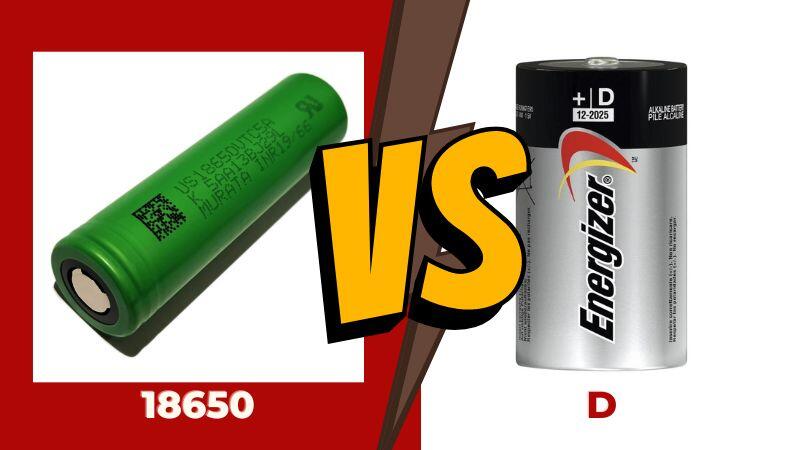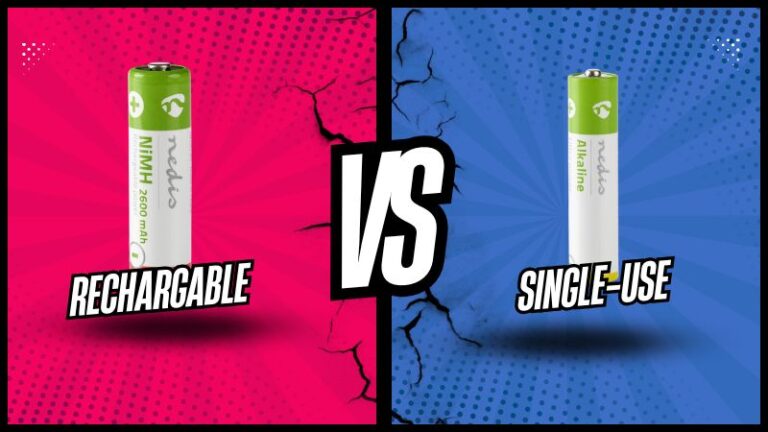Batteries are essential components of many electronic devices, ranging from small portable electronics to large-scale industrial applications. There are many types of batteries available in the market, each with its own specifications and applications. Two commonly used types of batteries are the 18650 and the D battery.
In this article, we will explore the differences between the 18650 and D batteries, their specifications, and their applications. Understanding the differences between these batteries can help users choose the right battery for their device and ensure optimal performance. Whether you are a consumer looking for the best battery for your flashlight or a manufacturer looking to power a large industrial machine, this article will provide you with valuable information to make an informed decision. So, let’s dive in and explore the world of 18650 and D batteries.
18650 batteries
The 18650 battery is a lithium-ion battery that was first introduced in the 1990s. The name 18650 comes from its dimensions: 18mm diameter and 65mm length. They are rechargeable and are commonly used in portable electronics such as laptops, power banks, and flashlights.
18650 batteries have a nominal voltage of 3.7 volts and a capacity that ranges from 1800mAh to 3500mAh. These batteries are popular among the vaping community because of their high discharge rate and long lifespan. They also have a low self-discharge rate, which means they can retain their charge for a longer period of time.
One of the main advantages of the 18650 battery is its size. It is small and compact, which makes it easy to carry around. They are also lightweight, which makes them suitable for portable devices. The rechargeable feature of the 18650 battery makes it an eco-friendly choice for users. Instead of disposing of the battery after one use, you can recharge it and use it again.
Check also – AAA vs AAAA Batteries: What are the Differences?
D batteries
The D battery, also known as a mono battery, is a cylindrical dry cell battery that was introduced in the 1890s. It is 33mm in diameter and 61.5mm in length. D batteries are used in flashlights, radios, and other devices that require a larger and more powerful battery.
D batteries have a nominal voltage of 1.5 volts and a capacity that ranges from 8000mAh to 12000mAh. They are known for their long lifespan and high energy density. The high energy density makes them suitable for devices that require a lot of power.
One of the main advantages of the D battery is its high capacity. It can store more energy than smaller batteries, which means it can power devices for a longer period of time. The larger size of the D battery also means that it can handle higher currents, which makes it suitable for devices that require a lot of power.
Comparison between 18650 and D batteries
Size
Size is a significant difference between the two types of batteries. The 18650 battery is smaller and more compact than the D battery. Its compact size makes it a popular choice for portable electronics, such as laptops, power banks, and flashlights. On the other hand, D batteries are larger and heavier, making them suitable for devices that require a larger and more powerful battery, such as radios, flashlights, and toys.
Capacity
Capacity is another significant difference between the two batteries. D batteries have a higher capacity than 18650 batteries. This means that they can store more energy and power devices for a longer period of time. In contrast, 18650 batteries have a lower capacity but are known for their high discharge rate and long lifespan.
Voltage
The nominal voltage of the two batteries is another important difference to consider. The 18650 battery has a nominal voltage of 3.7 volts, while D batteries have a nominal voltage of 1.5 volts. This means that 18650 batteries can power devices that require a higher voltage, such as high-performance flashlights and vaping devices. On the other hand, D batteries are suitable for devices that require a lower voltage, such as radios and toys.
Applications
18650 batteries are commonly used in portable electronics such as laptops, power banks, and flashlights. D batteries are used in devices that require a larger and more powerful battery such as flashlights, radios, and toys.
Rechargeable
Rechargeability is another significant difference between the two batteries. 18650 batteries are rechargeable, which makes them an eco-friendly choice for users. D batteries are not rechargeable and need to be disposed of after use. This means that 18650 batteries are more cost-effective in the long run as they can be used multiple times, while D batteries are single-use batteries that need to be replaced after use.
Cost
Cost is also a factor to consider when choosing between the two batteries. Generally, the cost of 18650 batteries is higher than that of D batteries due to their higher discharge rate, long lifespan, and rechargeability.
Conclusion
In summary, the choice between 18650 and D batteries depends on the specific application and the user’s requirements. If you require a battery for a portable electronic device or a high-performance flashlight, 18650 batteries may be the best choice due to their compact size, high discharge rate, and rechargeability. If you need a battery for a larger device, such as a radio or toy, D batteries may be a better choice due to their higher capacity and lower cost.




